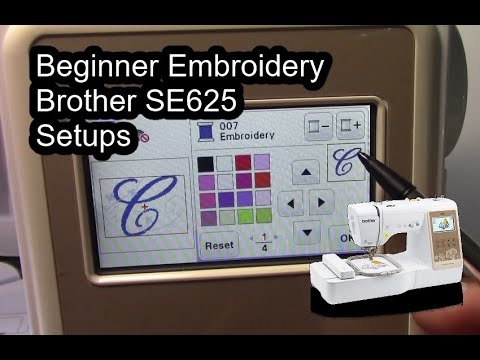Machine embroidery is a fantastic way to add intricate designs and personal touches to clothing, home decor, and other textiles. For beginners, the process might seem daunting at first, but with the right tools, techniques, and patience, you can quickly learn to create beautiful embroidered pieces. Whether you’re looking to start a small business or simply want to enhance your crafting skills, mastering machine embroidery opens up a world of creative possibilities. This article will guide you through essential tips to help you get started and elevate your embroidery game.
Choose the Right Equipment
Before diving into your first project, it’s crucial to select the appropriate equipment. A basic sewing machine with an embroidery foot is a good starting point, but many beginners opt for a dedicated embroidery machine. These machines are designed specifically for embroidery and often come with built-in hoop systems, pre-programmed stitches, and larger work areas. If you’re using a regular sewing machine, ensure it has a darning foot or an embroidery foot that allows for smooth stitching. Additionally, invest in high-quality embroidery threads and stabilizers, which help keep your fabric taut and prevent puckering.
Learn the Basics of Hooping
Hooping is one of the most critical steps in machine embroidery. The hoop holds your fabric in place while the machine stitches, ensuring even tension and preventing distortion. To hoop correctly, place your fabric between two hoops—usually a top and bottom hoop—and secure them tightly. Make sure the fabric is stretched evenly and not too tight, as this can cause it to pucker. For more complex designs, use a water-soluble stabilizer underneath the fabric to provide extra support. Proper hooping is essential for achieving clean, professional results.
Start with Simple Designs
As a beginner, it’s best to start with simple designs that don’t require too much time or precision. Look for pre-made embroidery patterns online or use software like Embird or Wilcom to customize your own. Begin with small motifs such as flowers, stars, or letters. These designs allow you to practice stitch types, thread colors, and hooping techniques without the pressure of a complicated project. As you gain confidence, you can move on to more intricate patterns and multi-color designs.
Understand Different Stitch Types
Machine embroidery involves various stitch types, each serving a different purpose. Common stitches include satin stitch (used for filling in shapes), running stitch (for outlining), and fill stitches (for covering large areas). Familiarize yourself with these stitches and how they affect the final look of your design. For example, a satin stitch creates a smooth, polished finish, while a running stitch adds texture and detail. Experiment with different stitches to see how they work on different fabrics and adjust your settings accordingly.
Practice with Different Fabrics
Not all fabrics behave the same way during embroidery. Cotton, denim, and fleece each require different techniques and stabilizers. For instance, cotton is relatively easy to work with, but it may need a light stabilizer to prevent puckering. Denim is thicker and requires a heavier stabilizer, while fleece can be challenging due to its stretchiness. Start by practicing on scrap fabric before moving on to your main project. This will help you understand how different materials respond to embroidery and allow you to make necessary adjustments.
Keep Your Machine Clean and Well-Maintained
A well-maintained machine produces better results. After each embroidery session, take a few minutes to clean the needle, bobbin area, and any excess thread. A clogged machine can lead to skipped stitches or broken threads, which can ruin your project. Regularly check the tension settings and adjust them if needed. Some machines have automatic tension settings, but others require manual adjustment. Keep a notebook to track your settings for different fabrics and designs, so you can refer back to them when needed.
Join Online Communities and Take Classes
Embroidery is a community-driven craft, and there are countless online forums, social media groups, and tutorials available to help beginners. Platforms like YouTube, Instagram, and Facebook host thousands of embroidery enthusiasts who share tips, tricks, and inspiration. Consider enrolling in an online course or attending a local workshop to learn from experienced embroiderers. These resources can provide valuable guidance and help you avoid common mistakes.
Embrace the Learning Process
Like any new skill, machine embroidery takes time and practice to master. Don’t be discouraged if your first few projects aren’t perfect. Each mistake is an opportunity to learn and improve. Keep experimenting with different techniques, colors, and designs, and over time, you’ll develop your unique style. Remember, the goal is to enjoy the process and express your creativity through your work.
By following these tips, beginners can confidently start their journey into machine embroidery and gradually build the skills needed to create stunning, professional-looking pieces. With dedication and a bit of patience, you’ll soon be stitching like a pro.
